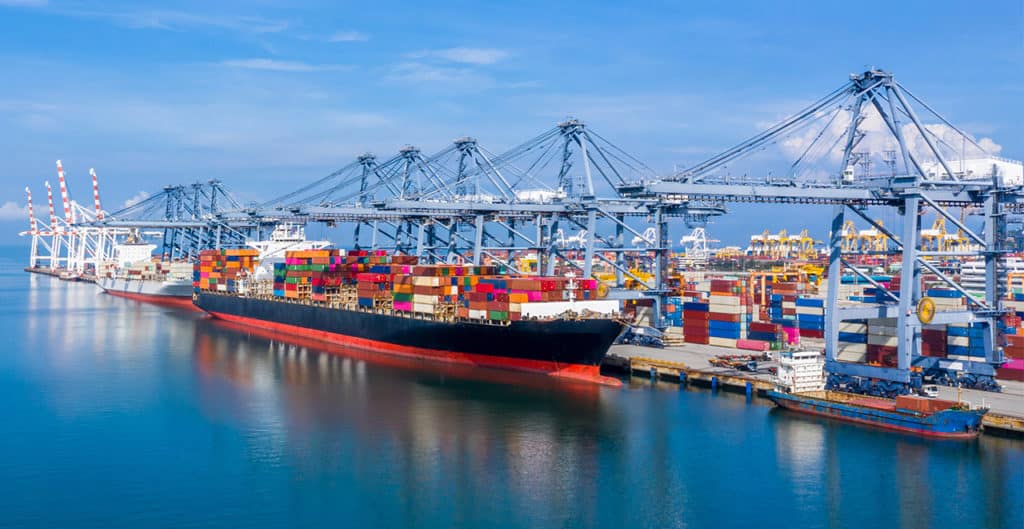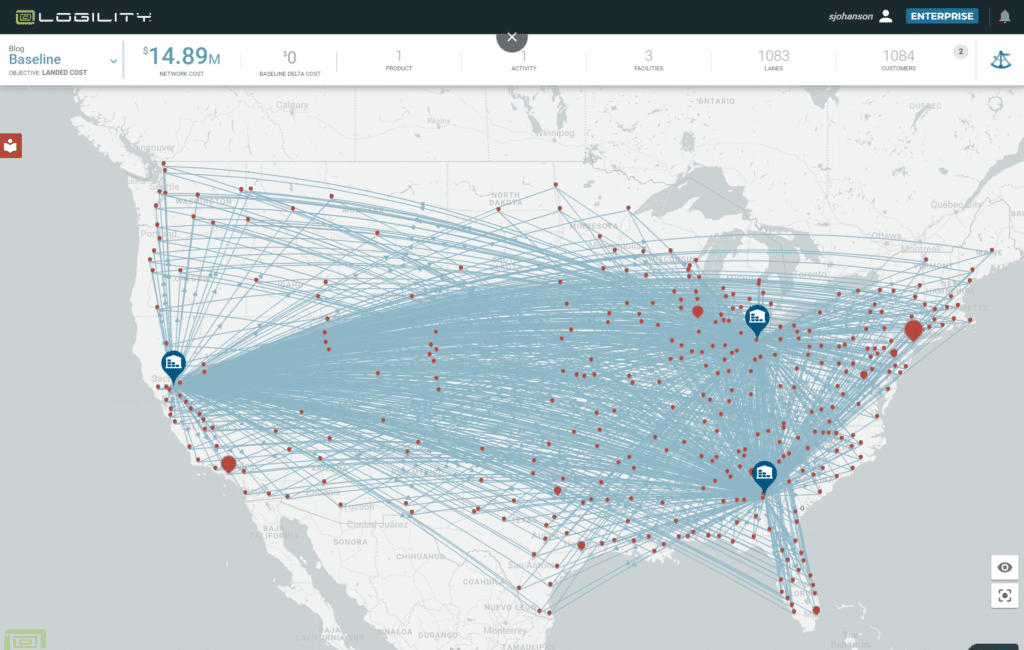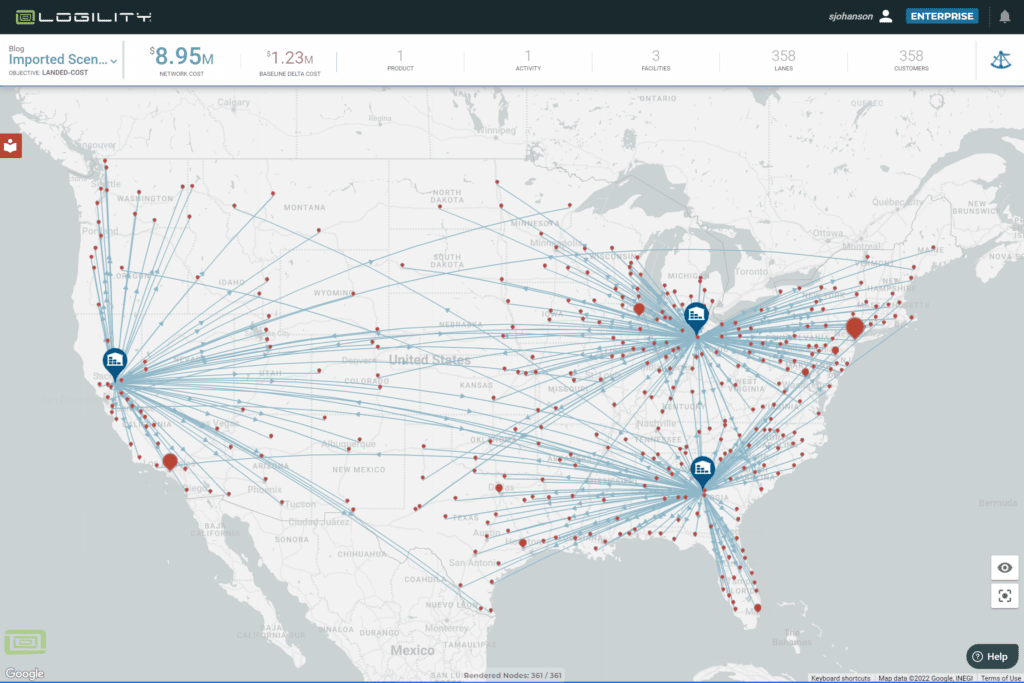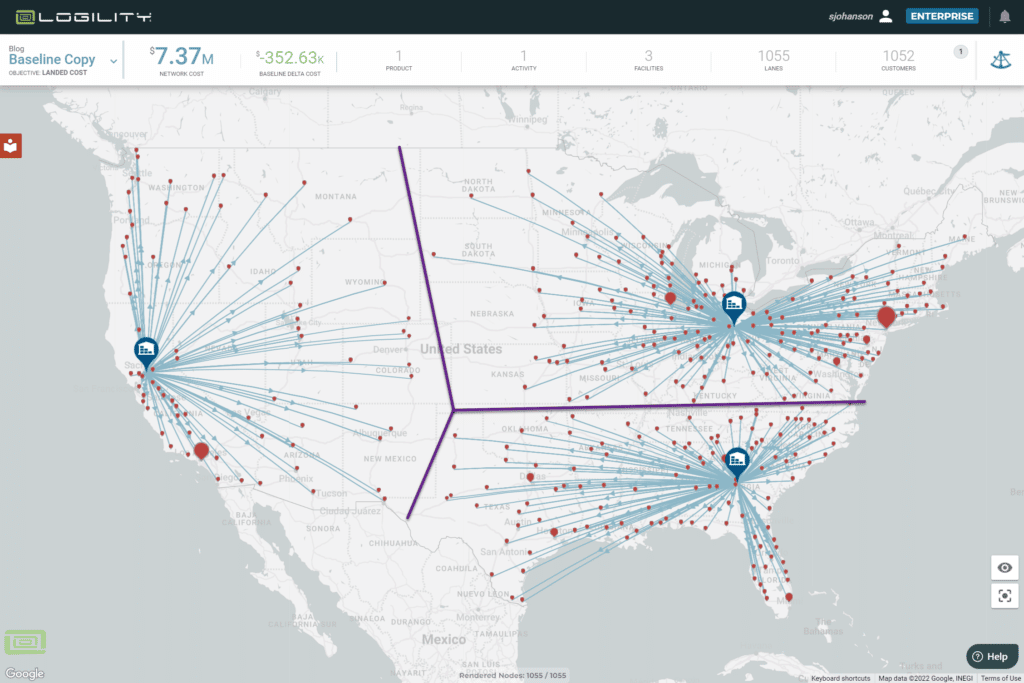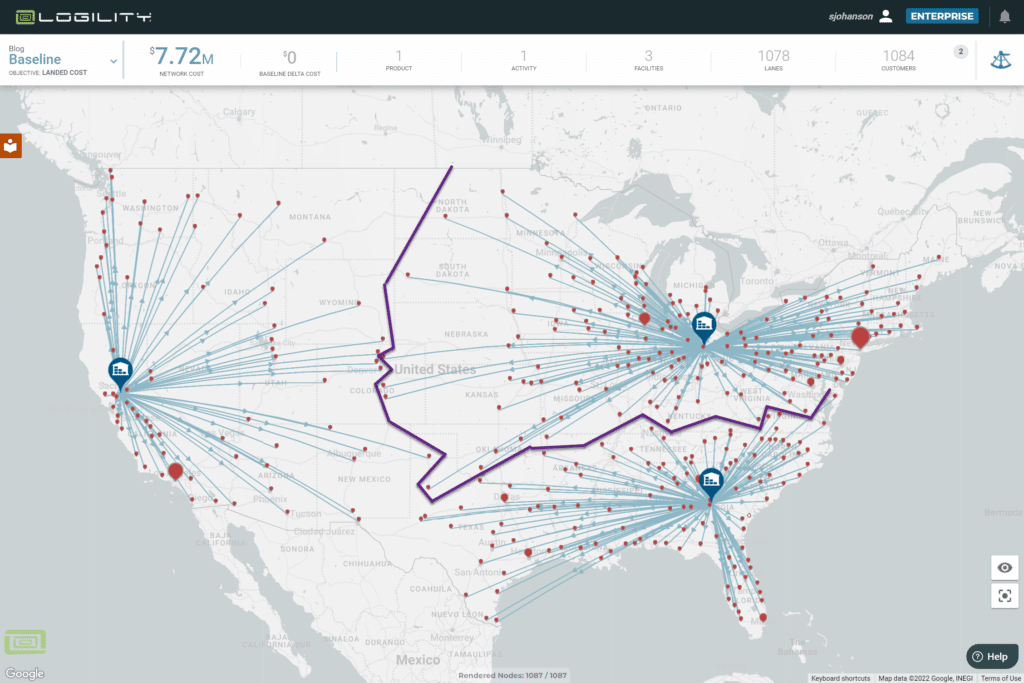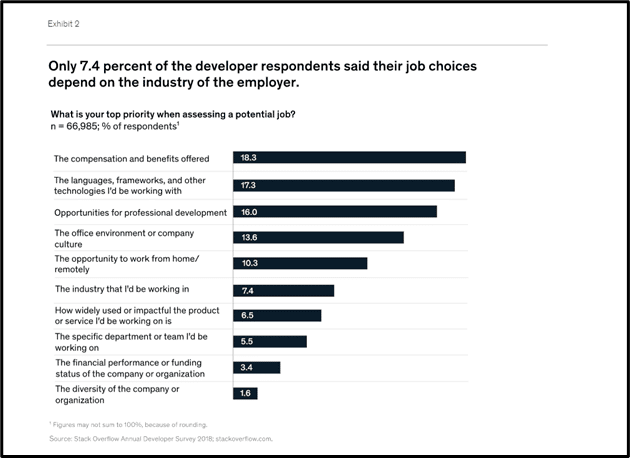Key Takeaways:
- At a time of intense supply chain disruption, 57% of organizations say they lack visibility into their supply chains
- Robust, resilient supply chains utilize AI, ML and automation
- These technologies power the modern supply chain, saving money and time and increasing profitability
- Make quicker, more informed decisions, reduce risk and inventory, and offer better customer service
Accurate Forecasts, Lower Supply Costs, and Faster Cash-to-Cash Cycles
As the last few years have shown, supply chain disruptions are unpredictable. They are also tough to manage without a proactive approach and the right technology. It’s worth noting that 79% of companies with high-performing supply chains – those that operate in the most efficient and cost-effective way across all key supply chain processes to most effectively match demand to supply – show greater revenue growth than their average industry competitor. These high-performing companies weather supply chain disruptions better, make speedier decisions, and perform more accurate forecasting.
What’s propelling these successes are automation, artificial intelligence (AI), and machine learning (ML). These are terms we are all accustomed to seeing batted around in our space, so it’s important to understand what they bring to supply chain management and what kinds of problems they can help supply chain leaders solve.
For example, more than half of today’s companies say they have poor visibility into their supply chain, and 63% say they have no technology to monitor their supply chain performance, therefore those businesses that embrace a digital supply chain management platform will leap over their competition.
In addition to making more money, organizations that have an optimized supply chain have lower supply costs, less than 50% of the inventory, and cash-to-cash cycles that are more than three times faster than those that do not. In this article, we’ll discuss the roles that AI, ML and automation play in the supply chain and how they can help your business thrive in an era of seemingly endless disruptions.
Transforming the Supply Chain Through Technology
The pandemic and its associated lockdowns and closures created unprecedented supply chain challenges. Market volatility has reigned ever since, highlighting the need for flexibility and agility. In response, companies have been taking a hard look at their supply chains with an eye toward resilience. To that end, digital supply chain platforms have become the weapon of choice to tackle supply chain disruptions.
With their integrated end-to-end approach and complete visibility, a digital supply chain platform can deal with the opportunities and constraints of business functions ranging from sourcing and procurement to sales. AI can analyze huge volumes of data, grasp relationships, give visibility into operations, and support better and speedier decision-making. This is a real game changer. But the benefits of AI, ML, and automation don’t stop there. Let’s look at how each can create a money-saving, money-making, resilient supply chain.

AI can help you improve demand forecasting and inform integrated business planning (IBP)
AI technology mimics human intelligence and is programmed to “think” like a human, rationalize, and take human-like action. With AI, you can improve demand forecasting and inform integrated business planning as well as revolutionize your supply chain in every area:
- Planning. AI gives you complete transparency through end-to-end visibility and offers end-to-end margin optimization.
- Procurement. With a digital supply chain platform, you benefit from full data integration with suppliers and the ability to optimize recipes for raw materials based on their forecasted pricing.
- Production. The insights provided by AI allow for agile production planning and scheduling.
- Distribution. With the real-time information provided by AI, you’ll be able to optimize routing, freight contracting, and vessel sharing to reduce both costs and the environmental impact of your organization.
- Sales and marketing. AI enables unified, more accurate price and demand forecasts as well as providing improved transparency and granularity, so you know the integrated margin per sale.
Those companies that were early adopters of AI-enabled digital supply chain management improved logistics costs by 15%, inventory levels by 35%, and service levels by 65% when compared with those without a digital supply chain. Now let’s look at ML.
ML can help you find new opportunities to optimize your supply chain
ML is a branch of AI. It’s the part that uses data and algorithms to mimic the way humans learn. It’s an essential component of your supply chain – statistical methods train algorithms to classify things, make predictions, and uncover critical insights that drive decision-making throughout the entire enterprise.
ML continuously analyzes your supply chain data to find opportunities for optimization. Using constraint-based modeling, the algorithms identify the factors affecting supply chain accuracy. The improvements can be felt across the entire supply chain:
- Improved forecasting. Humans just can’t crunch data like machine intelligence. A digital supply chain platform can quickly analyze large, diverse data sets to improve demand forecasting accuracy.
- Better collaboration. ML analyzes data across different networks so you can reduce freight costs, enhance performance in supplier delivery, and reduce supplier risk. By identifying the factors that impact efficiency within supply chain tiers, you can better collaborate with suppliers to find the optimum solution.
- Know how your supply chain is really performing. ML combines unsupervised learning, supervised learning, and reinforced learning to continually analyze data so you can get real insights into how your supply chain is doing and where you can improve for more efficiency.
- New product demand forecasting. When you have ML in your supply chain, it considers the causal factors that influence new product demand. The algorithms combine a pragmatic approach with advanced statistical models to enable accurate demand forecasting and data-driven decisions about inventory.
Supply chain management enhanced with AI improves forecasting accuracy while increasing granularity and optimizing stock replenishment. Forecasting errors can be reduced between 20% and 50%. Sales lost due to product unavailability can be reduced up to 65%, and you can achieve inventory reductions of 20% to 50%. ML can enable R&D cost reductions of 10% to 15% and reduce time-to-market by 10%.
The last piece of your supply chain management technology is automation. It’s all about increasing supply chain efficiency. Let’s explore.
Automation can help you make your supply chain more efficient, while reducing costs
Automation in the supply chain uses digital technology to streamline processes by boosting task efficiency. This is how it’s used to give you that boost while reducing costs and helping you scale your business:
- Manual task automation. Your staff likely has better, more valuable things to do than process documents and manipulate data. You can save a lot of time and money and make your supply chain run more smoothly, and your employees can spend more time building relationships with customers.
- Visibility. Visibility means everyone, no matter where they are in your network, can see the same information for a single source of truth. This helps eliminate order and delivery errors. Visibility into shipping information means your customers can follow their orders with real-time information.
- Better customer service. Customer expectations are constantly increasing. Automation means achieving faster delivery times, more competitive pricing, and the real-time order information your customers demand.
Automation in the supply chain manifests as increased fill rates, decreased cycle times, increased warehouse throughput time, lower labor and operational costs, reduced errors, and improved inventory management. All three of these technologies – AI, ML, and automation – work together to build a supply chain that can reduce the impact of supply chain disruptions, all while improving general company performance.
The Logility Platform delivers better business outcomes and more resilient supply chains
The Logility® Digital Supply Chain Platform lets you seize new opportunities, sense and respond to changing market dynamics, and more profitably manage complex global supply chains. We use the power of technology to deliver a digital, sustainable supply chain that powers the resilient enterprise.
This means better sourcing decisions, more accurate planning, accelerated cycle times, improved precision, and increased operating performance – everything you need to weather supply chain disruptions and constraints – while meeting your environmental, social and governance (ESG) goals.
It’s time for a digital, sustainable supply chain. Reach out to our specialists today to discuss how we can put these technologies to work in ways that matter to your business.
